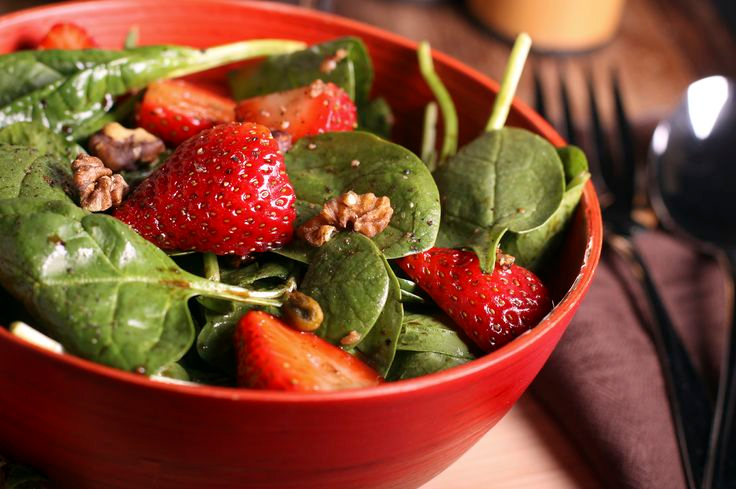Spinach Lasagna

Just writing about this recipe makes me hungry! It is a tasty way to package nutrient-rich spinach between calcium-rich cheeses; lasagna noodles made with whole grains; and healthy, hearty tomato pasta sauce. Any extra lasagna keeps well; heat for another meal within the next 3 to 4 days. So, go ahead and make the whole recipe, even if you are cooking for just a few people. Serve with a crisp, mixed green salad.
- 9 lasagna noodles, preferably made with whole grain
- 1 tablespoon olive oil
- 6-8 cups fresh spinach (amount need not be exact)
- 2 eggs, beaten
- 1 (16 oz.) carton fat-free or low-fat ricotta cheese
- 3 cups shredded cheese (Mozzarella is nice — however other cheeses also will work. I used a Swiss cheese as this is what was in the house at the time)
- 1 jar (24 oz.) spaghetti sauce, divided
Directions
- Heat oven to 350 degrees F.
- Prepare the lasagna noodles according to package directions. Don’t overcook them as they will cook more during the baking process. To keep them from sticking together while you’re getting the other ingredients ready, rinse them under cold water and lay on a cookie sheet, with layers separated by plastic wrap or foil.
- As you’re preparing the noodles, start assembling the other ingredients. Begin by heating olive oil over a medium-low heat in a large skillet. Add spinach to the pan in stages; turn leaves until they wilt. Add more spinach; repeat process until all of the spinach is added. Remove spinach from skillet, place in a bowl, and set aside to cool.
- Blend eggs and ricotta cheese in a food processor or blender until smooth. Transfer to another bowl and stir in 2 cups of the shredded cheese. Then, mix in the spinach.
- Assemble the ingredients in a 13 x 9-inch baking dish that has been sprayed with cooking spray:
- Layer 1: 1 cup of the spaghetti sauce, 3 lasagna noodles, and half the ricotta mixture.
- Layer 2: Repeat layer 1
- Layer 3: Top with remaining 3 noodles, spaghetti sauce and the remaining 1 cup shredded cheese.
- Bake about 35 to 45 minutes or until top is lightly browned and a food thermometer inserted into the lasagna registers 165 degrees F. Let stand 10 minutes before serving.
Cook’s Notes:
One 10-oz bag of fresh spinach equals approximately 5-6 cups of leaves. If you wish to use frozen spinach, substitute 1 package (10 oz.) frozen chopped spinach, that has been thawed and well drained.
The Centers for Disease Control and Prevention give this method for washing fresh spinach: “Spinach grows in sandy soil, so wash it thoroughly to get rid of the grainy, sandy particles. Make sure to tear off the stem. Separate the leaves, and place them in a large bowl of water. Gently wash leaves, and let the sand drift to the bottom of the bowl. Remove leaves from the water, and repeat the process with fresh water until the leaves are clean. If spinach is to be eaten raw, dry it completely by using a salad spinner or by blotting it with paper towels.”
Though this recipe is made without salt, as additional way to lower sodium is to use a no-salt-added spaghetti or pasta sauce or make your own. You can make a simple sauce by mixing together 1 (15 oz.) can no-salt-added tomato sauce, 1 (15 oz.) can no-salt added diced tomatoes; and 2 teaspoons Italian seasoning or to taste.


















